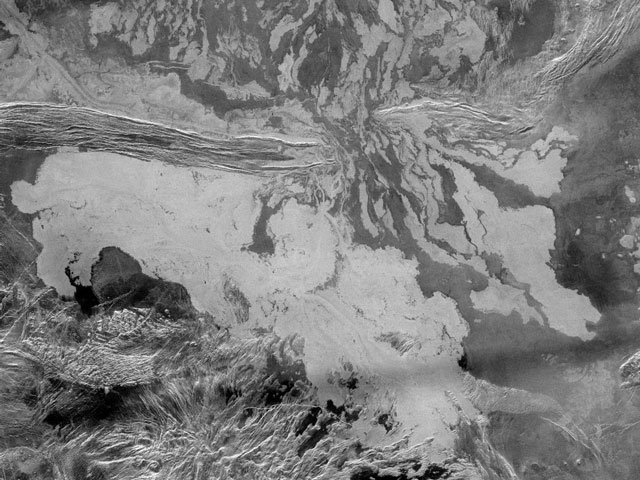Explanation: The hot surface of Venus shows clear signs of ancient lava flows. Evidence of this was bolstered by the robot spacecraft Magellan, which orbited Venus in the early 1990s. Using imaging radar, Magellan was able to peer beneath the thick perpetual clouds that cover Earth's closest planetary neighbor. Picture above, lava apparently flowed down from the top of the image and pooled in the light colored areas visible across the image middle and bottom. The lava cut a channel across the darker ridge that runs horizontally across the image center. The picture covers about 500 kilometers across. The lava originates from a caldera named Ammavaru that lies about 300 kilometers off the image top. The hot dense climate makes Venus a more difficult planet on which to land spacecraft and rovers. Venus currently sparkles as the brightest object in the western sky after sunset.
1999 2000 2001 2002 2003 2004 2005 2006 2007 2008 2009 2010 2011 2012 2013 2014 2015 2016 2017 2018 2019 2020 2021 2022 2023 2024 2025 |
Yanvar' Fevral' Mart Aprel' Mai Iyun' Iyul' Avgust Sentyabr' Oktyabr' Noyabr' Dekabr' |
NASA Web Site Statements, Warnings, and Disclaimers
NASA Official: Jay Norris. Specific rights apply.
A service of: LHEA at NASA / GSFC
& Michigan Tech. U.
|
Publikacii s klyuchevymi slovami:
Venus - radar - Venera - radar
Publikacii so slovami: Venus - radar - Venera - radar | |
Sm. takzhe:
Vse publikacii na tu zhe temu >> | |
